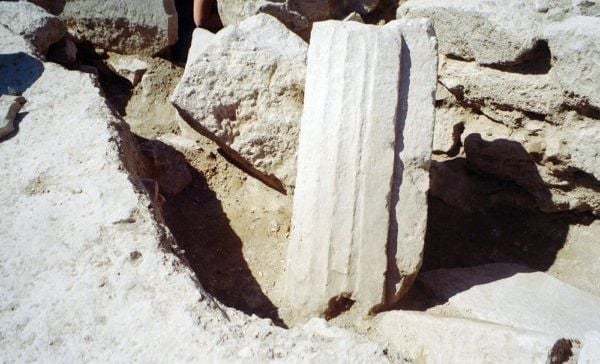Greece’s culture ministry announced on Friday that a group of archaeologists working on the island of Evia have unearthed the remains of a temple dedicated to goddess Artemis in Amarynthos village.
The excavation was carried out at the foot of the Paleoekklisies hill 110 kilometres from Athens.
The temple dates back more than 2,000 years while the quest to uncover it has lasted more than 100 years.
The Swiss School of Archaeology in Greece had been working on the project since 2007, in cooperation with the Ephorate of Antiquities on Evia. Ten years later, and during the summer of 2017, new trenches were opened revealing the centre of the temple. More buildings dating from the 6th to the 2nd centuries BCE were also discovered, as well as a fountain.
The project is led by Karl Reber professor of Classical archaeology at the University of Lausanne and director of the Swiss School in Greece, and Amalia Karapashalidou, the honorary ephor of antiquities of Evia.
“Since the 19th century, archaeologists have tried to locate this sanctuary, but this has not been possible, despite many assumptions,” the ministry said. It also noted that Strabo had misled experts because he made a mistake when he referred to the temple’s distance from the nearby city of Eretria,” the Greek Culture Ministry said in a statement.

Archaeologists were led to the sanctuary after summer excavations unearthed buildings dating from the 6th to 2nd centuries BCE, as well as inscriptions and coins bearing the goddess’s name ‘Artemidos’ was found written on inscriptions of pedestals and sealed ceramics, referring to offerings made to the goddess Artemis, her brother Apollo, and their mother Lito, making it possible for archaeologists to identify the temple.
According to the ministry that cited ancient sources, the sanctuary was one of the most important in Evia and that it was mentioned in the 10th book of the Greek geographer Stravonas (Strabo), who died in the early first century.
Previous teams of archaeologists, based their research exclusively on Strabo’s scriptures, disregarding an error in distance.
“Strabo’s error had been pointed out by Professor Denis Knoepfler, a historian and epigraphist at the University of Neuchatel in Switzerland and the College de France, who said that the temple was 11 kilometres from the city of Eretria, rather than 1.5 kilometres as mentioned by Strabo.”









